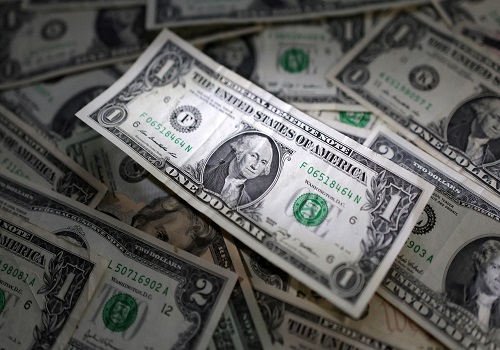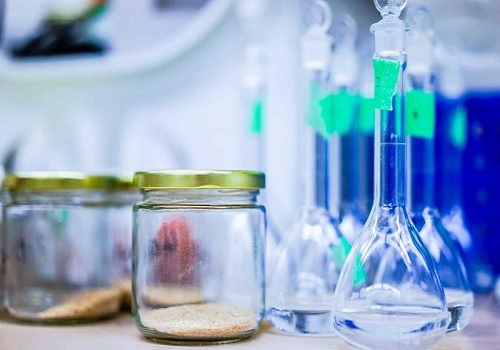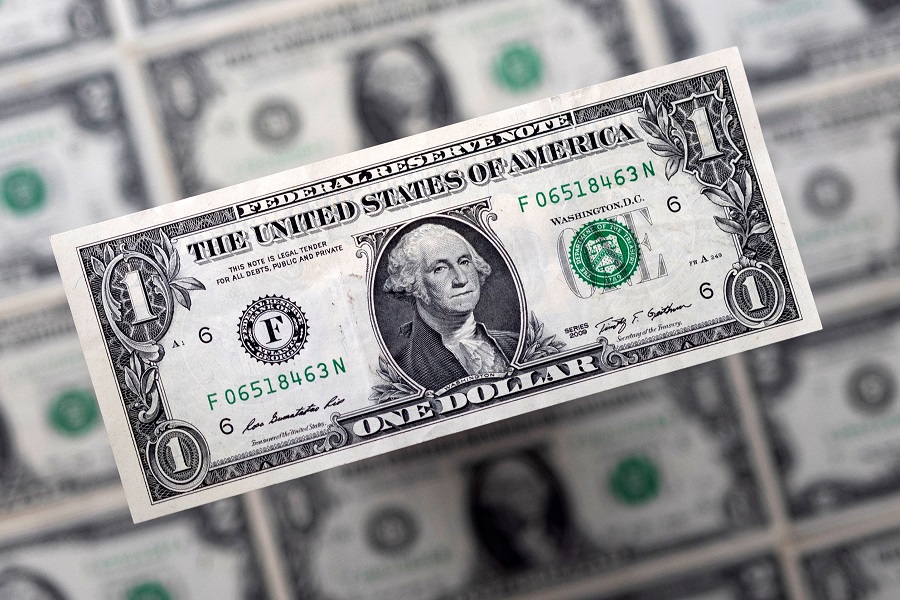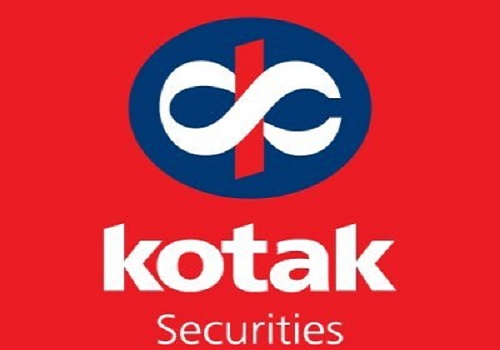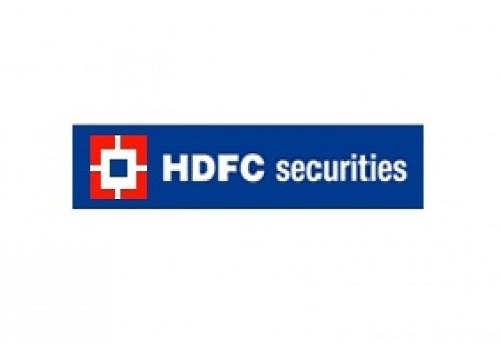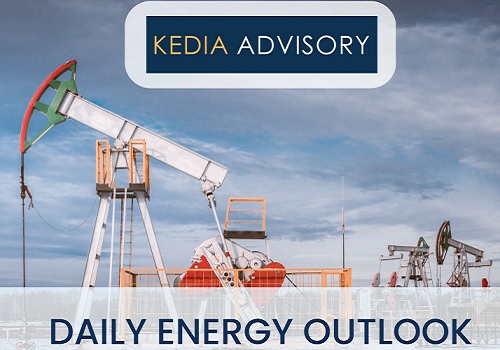Turmeric trading range for the day is 14260-14744 - Kedia Advisory
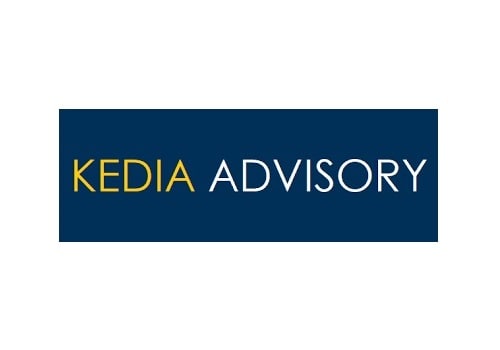
Gold
Gold prices settled higher by 0.37% at 99,541 on the back of escalating geopolitical tensions in the Middle East, which revived demand for safe-haven assets. The latest spike followed US President Donald Trump's call for immediate evacuation from Tehran after intensified Israeli airstrikes on Iranian targets. Weak US economic data also supported gold’s uptrend, with retail sales dropping 0.9% and industrial production contracting 0.2% in May—both worse than expected. Meanwhile, major financial institutions remain bullish: Goldman Sachs reiterated its $3,700/toz gold forecast by end-2025, while Bank of America sees a potential rally to $4,000/oz in the next 12 months. On the demand side, global gold demand rose 1% YoY in Q1 2025 to 1,206 metric tons, driven by a 170% surge in investment demand, especially through gold ETFs and bars, offsetting a 32% fall in coin demand. China’s bar and coin investment soared 12%, reaching its highest since 2013. However, jewellery demand declined 21% amid high prices, hitting its lowest level since the pandemic. Physical demand weakened in Asia, with Indian dealers offering steep discounts up to $63/oz as local prices crossed 100,000, while premiums in China, Hong Kong, and Singapore held steady to slightly lower. Technically, the market is in short covering mode with open interest falling 4.4% to 14,932, indicating liquidation of short positions. Gold has support at 99,020, and a breach could push prices toward 98,495. Resistance is seen at 99,860; a break above may lead to testing 100,175.
Trading Ideas:
* Gold trading range for the day is 98495-100175.
* Gold gains as escalating tensions in the Middle East boosted demand for safe-haven assets.
* US retail sales dropped 0.9% and industrial production contracted 0.2% in May, both worse than expected.
* BofA sees a path for gold to rally to $4,000/oz over the next 12 months.
Silver
Silver prices surged by 2.28% to settle at 108,995, buoyed by strong industrial demand, persistent supply deficits, and heightened geopolitical tensions that lifted its safe-haven appeal. The metal’s critical role in the green economy—particularly in solar power, electronics, and electrification—now represents over half of global demand, underscoring silver’s long-term structural importance. The Silver Institute forecasts a fifth consecutive annual deficit in 2025, projected at 117.6 million troy ounces. Though the deficit is expected to narrow by 21% this year, ongoing supply constraints continue to support elevated price levels. Industrial fabrication, silver’s primary demand driver, is expected to rise by 3% in 2025, exceeding 700 million ounces for the first time. Meanwhile, total global demand is seen holding steady at 1.20 billion ounces, with gains in industrial applications and physical investment offset by weaker jewellery and silverware demand. Jewellery demand is expected to fall 6%, mainly due to high prices in India causing a double-digit contraction. In contrast, physical investment demand for coins and bars is projected to rebound by 7% after a sharp 22% drop in 2024. Improving sentiment in Europe and North America is driving fresh investment, with Western investors adjusting to higher price levels. From a technical standpoint, the silver market is experiencing fresh buying, reflected in a 4.66% increase in open interest to 17,695 contracts. Silver has immediate support at 106,895, and a break below this level could lead to 104,790. On the upside, resistance is seen at 110,215; a breakout above this could push prices towards 111,430.
Trading Ideas:
* Silver trading range for the day is 104790-111430.
* Silver gains on strong industrial demand and persistent supply shortages.
* Silver faces fifth straight annual supply deficit in 2024.
* Silver Institute expects 21% narrower deficit by 2025.
Crude oil
Crude oil prices surged by 4.13% to close at 6,426, fueled by escalating geopolitical tensions in the Middle East. The rally was sparked after Israel intensified airstrikes on Tehran, targeting strategic locations such as state media buildings, prompting U.S. President Donald Trump to call for an immediate evacuation of the Iranian capital. Fears of a broader conflict disrupting global energy flows and key trade routes lifted oil markets sharply. Despite Iran signaling a willingness to resume nuclear negotiations, investor sentiment remained cautious amid growing uncertainty in the region. On the supply side, bullish momentum was reinforced by a larger-than-expected draw in U.S. crude inventories, which declined by 3.644 million barrels for the week ending June 6, outpacing forecasts of a 2.5 million barrel drop. Stocks at the Cushing, Oklahoma hub also declined by 403,000 barrels. However, refined product inventories rose, with gasoline and distillate stocks climbing by 1.504 million and 1.246 million barrels respectively, slightly capping the bullish sentiment. Meanwhile, Russian Deputy Prime Minister Alexander Novak remarked that current oil prices are “not appropriate” for most producers, suggesting that further OPEC+ policy adjustments remain on the table. Technically, the market is witnessing short covering, as open interest dropped sharply by 30.95% to 7,787. Crude has immediate support at 6,219, with deeper downside potential toward 6,012. On the upside, resistance lies at 6,539; a breakout could extend gains to 6,652.
Trading Ideas:
* Crudeoil trading range for the day is 6012-6652.
* Crude oil rises as geopolitical tensions between Israel and Iran escalated.
* Russia's Novak says oil prices 'not appropriate' for most producers
* World oil demand to keep growing this decade despite 2027 China peak, IEA says
Natural gas
Natural gas prices climbed 2.75% to settle at 329.1, supported by stronger demand expectations driven by hotter-than-normal July weather forecasts and a rebound in LNG exports. After recent maintenance at key LNG terminals like Cameron, Sabine Pass, and Corpus Christi, feedgas flows are expected to increase significantly in the coming weeks. So far in June, LNG feedgas demand has averaged 14.1 billion cubic feet per day (bcfd), slightly lower than May's 15.0 bcfd and April's record 16.0 bcfd, but expected to recover soon as export operations normalize. Weather forecasts show sustained heat across the Lower 48 states through early July, likely increasing natural gas consumption for cooling purposes. On the supply side, output in the Lower 48 rose slightly to 105.3 bcfd, with daily production hitting an eight-week high of 106.4 bcfd. U.S. utilities added 109 billion cubic feet to storage for the week ending June 6, aligning with expectations. Despite the seasonal build, storage levels remain 8.6% below last year’s mark but are 5.4% above the five-year average. According to the U.S. Energy Information Administration (EIA), both natural gas production and consumption are expected to reach new highs in 2025. Technically, the market is in fresh buying mode, as open interest jumped 19.24% to 13,477. Natural gas finds support at 322.5, with further downside at 315.8. Resistance is seen at 335.4, and a break above could lead to 341.6.
Trading Ideas:
* Naturalgas trading range for the day is 315.8-341.6.
* Natural gas climbed as hotter-than-normal July weather and rebounding LNG exports drive up demand.
* LNG exports rebound as key U.S. terminals resume post-maintenance operations.
* June LNG feedgas demand averages 14.1 bcfd, below April highs.
Copper
Copper prices edged up by 0.14% to close at 879.75, supported by improved consumer spending data from China, which boosted hopes for a demand recovery in the world’s top metals consumer. Although China’s factory output growth slowed to a six-month low in May, stronger-than-expected retail sales helped offset concerns, providing a modest lift to copper. However, gains were capped amid broader market caution triggered by geopolitical tensions and economic uncertainty. On the supply front, copper inventories on the London Metal Exchange (LME) fell sharply by 7,300 tons to 107,325 tons, marking their lowest level in over a year and down 60% over the past four months. Meanwhile, the premium of Comex copper over LME narrowed to $927 a ton from $969, indicating some easing in transatlantic demand differentials. Chinese smelters have been increasing exports due to weakening domestic demand, highlighting lingering softness in local consumption. Additionally, copper concentrate imports by China fell 18% month-on-month in May to 2.4 million metric tons, though still up 5.8% year-on-year. Globally, the refined copper market posted a 17,000 metric ton surplus in March, a significant contraction from the 180,000-ton surplus in February, per the ICSG. Adjusted for Chinese bonded stock changes, the surplus was 38,000 tons in March. Technically, the market is in a short covering phase, with open interest falling by 16.71% to 4,002. Copper has immediate support at 876.6, and a break below could test 873.3. Resistance is now seen at 882.5, and a move above that may push prices toward 885.1.
Trading Ideas:
* Copper trading range for the day is 873.3-885.1.
* Copper gains after higher consumer spending in China raised hopes of a boost to metals demand.
* LME copper inventories dropped by another 7,300 tons to 107,325.
* Comex premium over LME copper to $927 a ton, down from $969 on Friday.
Zinc
Zinc prices settled marginally higher by 0.02% at 252.5, as markets continued to weigh the mixed global demand outlook, particularly from China—the world’s largest consumer. Support came from stronger-than-expected Chinese retail sales data, which helped ease fears of a broader economic slowdown and temporarily limited bearish sentiment. However, the upside remained capped amid lingering uncertainty following lackluster progress in U.S.-China trade talks and mounting concerns over weak Chinese manufacturing demand. Chinese buyers continued to limit zinc purchases to immediate needs, reflecting cautious sentiment driven by sluggish downstream activity. Further dampening optimism, recent Chinese macroeconomic data showed a decline in both exports and imports, indicating weakening external and internal demand. Consumer prices have declined for a fourth straight month, while producer price deflation has deepened to near two-year lows—signs of persistent disinflationary pressures in the economy. On the supply side, global zinc market surplus narrowed to 23,700 metric tons in March from 75,900 tons in February, as per the International Lead and Zinc Study Group (ILZSG). From January to March 2025, the global surplus stood at 143,000 tons, slightly lower than the same period last year. China’s refined zinc production in May dropped by 1% month-on-month but was up 2% year-on-year. Technically, the market is in short covering, with open interest falling by 7.7% to 2,015 contracts. Zinc has support at 251, and a break below could push prices to 249.5. Resistance is at 253.9, with further upside possible toward 255.3.
Trading Ideas:
* Zinc trading range for the day is 249.5-255.3.
* Zinc gains as markets continued to assess the outlook for global manufacturing demand.
* China’s strong retail sales ease bearish sentiment on consumer spending.
* China’s consumer prices fell for the fourth straight month, while producer price deflation deepened to its lowest level in nearly two years
Aluminium
Aluminium prices rose by 1.18% to settle at 245.3, supported by tight inventory levels and expectations of increased demand for liquid aluminium. Market sentiment was further underpinned by macroeconomic and geopolitical developments. Retail sales in China, a major consumer of aluminium, beat expectations, helping to limit bearish sentiment despite broader economic concerns. However, weak Chinese export and import data, persistent disinflationary pressures, and ongoing US-China trade tensions have tempered bullish enthusiasm. On the supply front, global uncertainty continues due to tensions in Guinea, where the government’s dispute with Emirates Global Aluminium could disrupt bauxite mining — a critical input for aluminium production. While China’s aluminium production rose by 5% year-on-year to 3.83 million metric tons in May, inventory trends continue to reflect a tight market. Stocks in SHFE warehouses dropped to 110,001 tons as of June 13 — the lowest since February 2024 — after plunging 54% since late March. In contrast, aluminium inventories at Japan’s three major ports rose by 3.3% to 331,000 metric tons at the end of May, and LME warehouses saw an increase in available tonnage, somewhat capping gains. China’s aluminium exports climbed 5.6% month-on-month in May to 547,000 tons, though they fell 3.2% year-on-year, with cumulative exports down 5.1% year-to-date. Technically, the market is experiencing short covering, with open interest down 0.69% to 3,471. Aluminium finds support at 242.6, with further downside potential to 239.9. On the upside, resistance is seen at 246.9, and a breakout could lead to 248.5.
Trading Ideas:
* Aluminium trading range for the day is 239.9-248.5.
* Aluminium supported by low inventories and rising liquid metal demand.
* Guinea bauxite supply risk rises amid mining license tensions.
* SHFE aluminium stocks plunge to lowest levels since February 2024.
Turmeric
Turmeric prices slipped marginally by 0.4% to settle at 14,448 amid subdued domestic and export demand, despite a slight increase in market arrivals. Daily arrivals rose to 13,660 quintals from 11,940 in the previous session, reflecting a steady inflow of produce. While weak demand capped gains, the downside remained limited due to lower production expectations and firm market activity in key mandis. On the production front, dry weather is currently aiding timely sowing, with preliminary estimates suggesting a 15–20% increase in turmeric acreage as farmers turn away from less profitable alternatives. For the 2024–25 season, the area under turmeric cultivation is estimated at 3.30 lakh hectares—up 10% from the previous year. However, despite the expanded acreage, production may not see a proportional rise due to concerns over untimely rainfall and reduced yields. The 2023–24 production stood at 10.75 lakh tonnes, while new season yields are projected to decline by 10–15%, especially in regions like Nanded, where crop quality is affected. Export performance has been encouraging, rising 8.83% to 1.76 lakh tonnes in FY25 over the previous year, although March 2025 exports dipped 13.41% YoY. Technically, the market remains under fresh selling pressure, with open interest increasing by 5.04% to 15,630. Prices now find support at 14,354 and resistance at 14,596; a breakout above this could lift prices toward 14,744.
Trading Ideas:
* Turmeric trading range for the day is 14260-14744.
* Turmeric prices fell due to weak domestic and export demand.
* Arrivals rose to 13,660 quintals vs. 11,940 in the previous session, indicating increased availability
* Turmeric exports during Apr - Mar 2025, jump by 8.83 percent at 176325.34 tonnes compared to Apr - Mar 2024.
* In Nizamabad, a major spot market, the price ended at 14431.5 Rupees gained by 0.22 percent.
Jeera
Jeera prices edged higher by 0.31% to settle at 19,300 on the back of short covering, following recent losses driven by weak domestic and export demand post the retail season. The upward move was modest, reflecting underlying pressure from sluggish buying interest both locally and overseas. Traders noted that the conclusion of the retail season and limited participation from foreign buyers have contributed to the muted sentiment. Market fundamentals remain soft, as supplies are ample and export activity remains subdued. Farmers still hold around 20 lakh bags of cumin, out of which only 3–4 lakh bags are expected to be traded before the season ends. This would result in a substantial carry-forward stock of approximately 16 lakh bags. Despite favorable sowing and improved crop conditions suggesting stable production compared to last year, the lack of active export demand is dampening market enthusiasm. While geopolitical tensions in other jeera-producing countries like Syria, Turkey, and Afghanistan have limited global supply, Indian exports haven't picked up significantly. Jeera exports rose sharply by 39.63% year-on-year to 2.12 lakh tonnes in FY25, indicating a strong annual performance. However, on a monthly basis, exports in March 2025 dropped 46.03% compared to March 2024, despite a sequential increase of 33.40% over February 2025. Technically, the market is under fresh buying as open interest rose by 6.59% to 6,405, and prices gained 60. Immediate support lies at 19,210, with a break below likely to test 19,120. Resistance is seen at 19,370, and a move above could push prices toward 19,440.
Trading Ideas:
* Jeera trading range for the day is 19120-19440.
* Jeera gained on short covering after prices dropped due to weak domestic and export demand.
* Ample existing stock and comfortable supply are dampening price prospects.
* Global supply disruptions haven't translated into higher Indian exports due to tepid demand.
* In Unjha, a major spot market, the price ended at 19747.65 Rupees dropped by -1.17 percent.
Views express by all participants are for information & academic purpose only. Kindly read disclaimer before referring below views
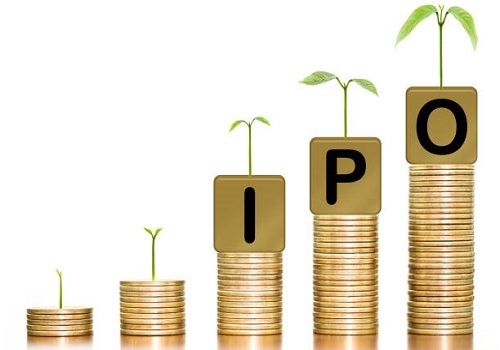
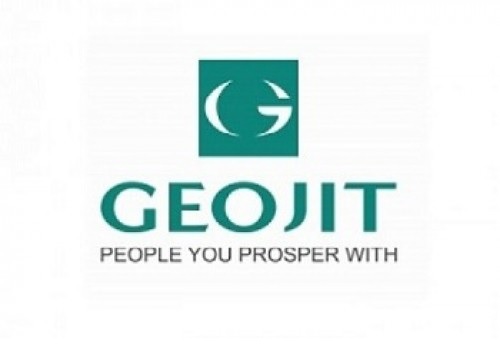
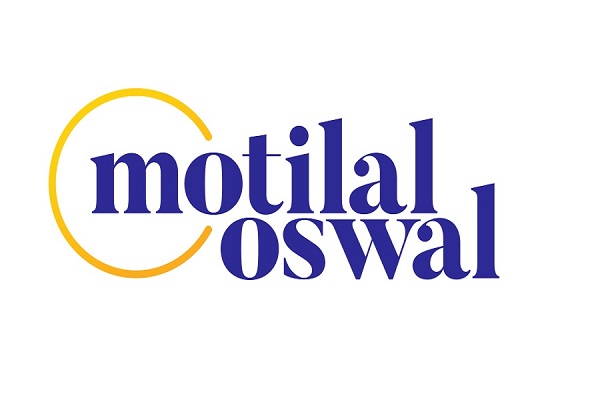

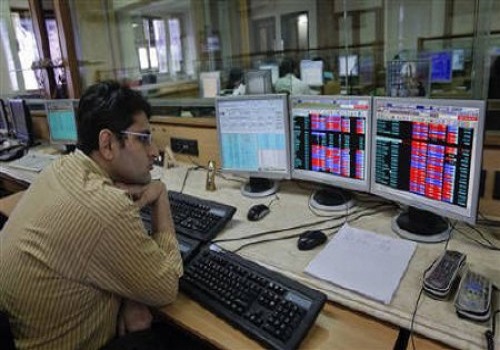
.jpg)


